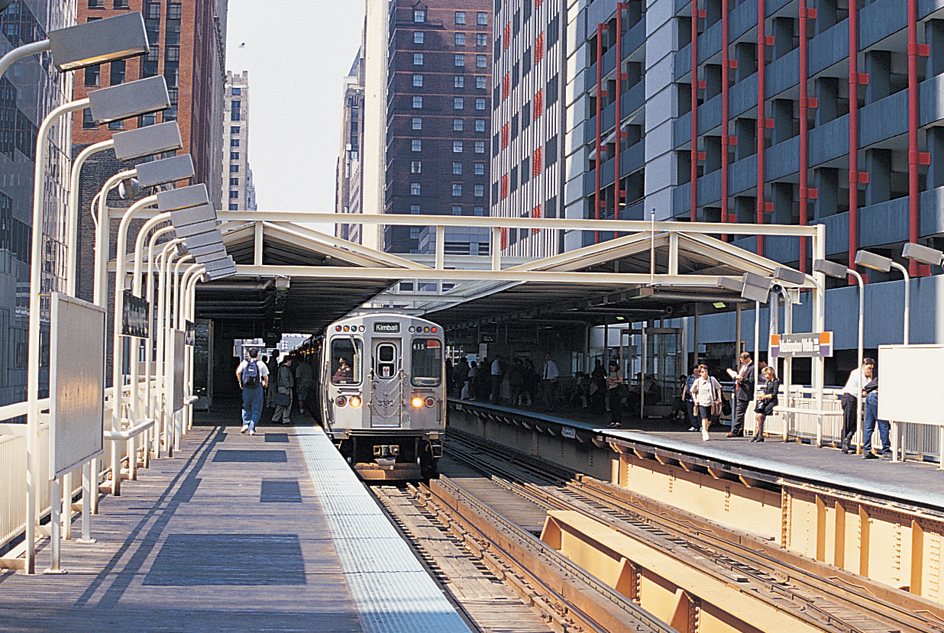Elevated railroad, usually called an el, is an electric railroad that runs on tracks above other traffic. Steel or concrete structures support the tracks. Elevated railroads help lessen traffic on the street level, but they also block some sunlight to the street.

An elevated train gets its power through an electrified third rail, which runs beside the regular rails. Most railcars can propel themselves. A car picks up electric current through two metal plates called shoes. The shoes run along the third rail, delivering current through wires to two traction motors. The motors turn driving wheels, which propel the car along the track. The car operator uses a device called a controller to regulate the amount of current going to the motors. In a train, the operator uses the controller in the front car to adjust the train’s speed. See Electric railroad.
Colonel Charles T. Harvey built a one-track experimental elevated line in New York City in 1867. American inventor Rufus Gilbert developed the standard elevated structure used in New York City and Chicago. The first cars were elaborate, with mahogany woodwork, carpeted floors, and plush seats.
See also Chicago (Downtown Chicago).
